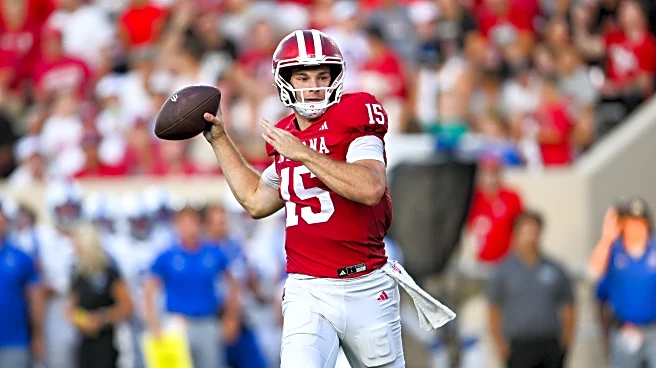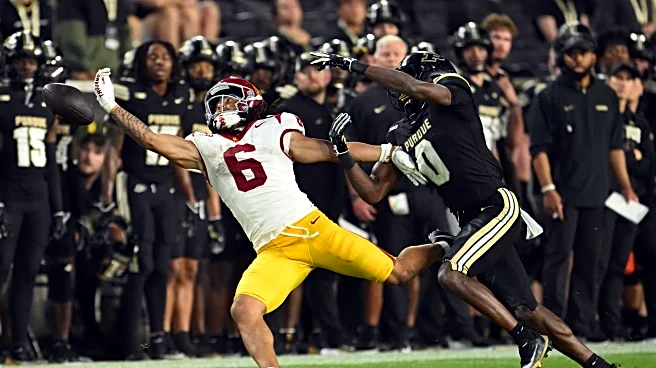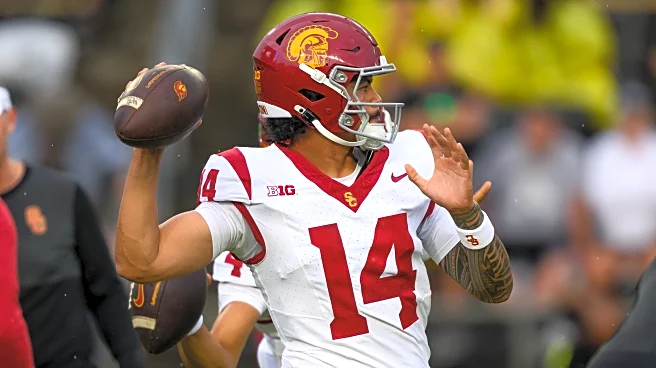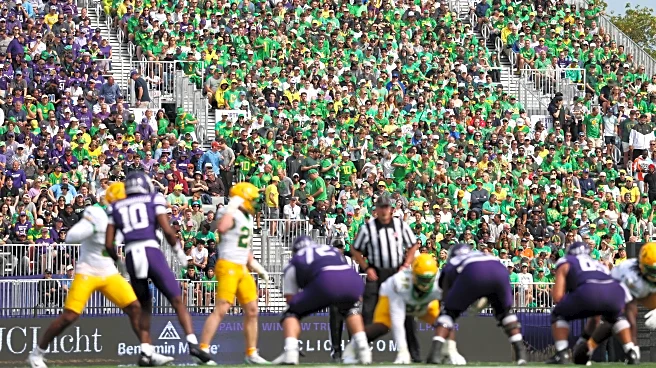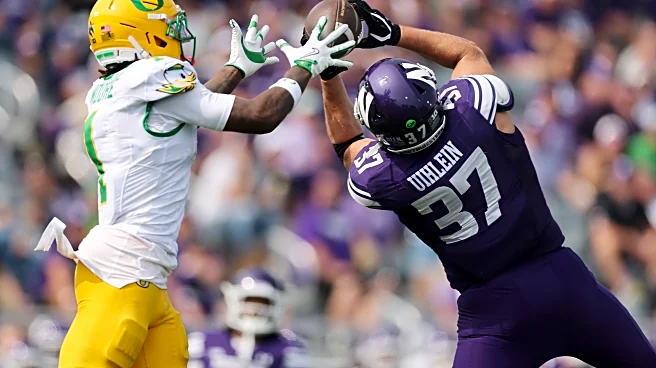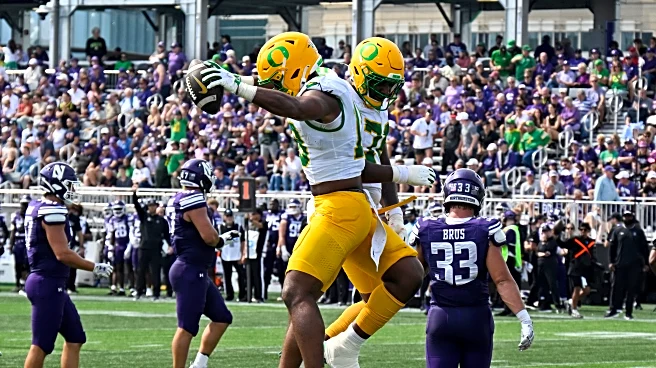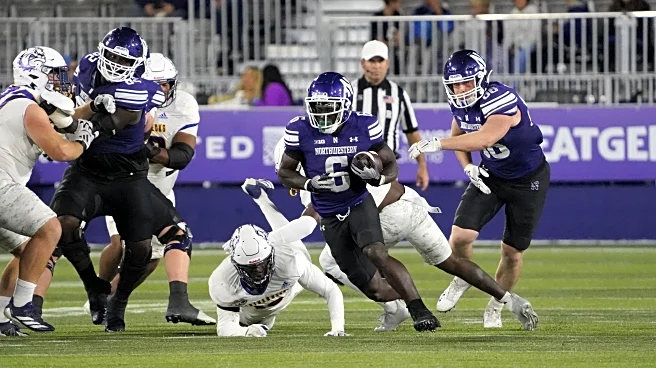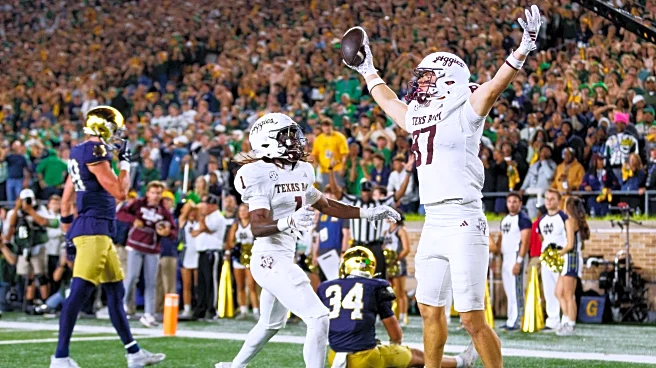The duality of college football is a world phenomenon that needs to be studied.
The first time Northwestern faced a CFP contender, its offense put up a dud with a lineage of issues bubbling to the surface: a quarterback trying to get his chops back after being sidelined for a year, a run scheme that was stuffed for the vast majority of the game and an offensive line that was outclassed, to say the least.
Facing an even better team last Saturday — a top five program in the nation at the time, the offense
pieced together drives that showed flashes of the ‘Cats former glory, reflecting the Pat Fitzgerald era when NU cracked the AP Top 10 back in 2020.
313 yards of total offense against a juggernaut defensive line and, arguably, the smartest coach in the FBS. Without its starting running back.
Not too shabby.
With an extra week to prep for a winnable game against UCLA, Northwestern seems to be trending in the right direction, exceeding its expectations in back-to-back weeks. It’s time to peel the scab off the skin and take a look at the two-day-old cut that stems from this 20-point loss.
1. Zach Lujan has finally balanced the scale
If one can ignore the Preston Stone interception and fumble, the Wildcats’ first-half game script was their best since their matchup against Maryland last season. For the first time this season (against an FBS school), NU was able to push the ball downfield, gaining chunk yardage on the ground while mixing in quick-hitters for Stone to get comfortable in the pocket.
That’s not to say that the offense didn’t burn out. It definitely did, but its performance was a far cry from what happened against Tulane in Week One.
Griffin Wilde is proving himself at the FBS level, getting himself open for four of Stone’s 11 completions on the day. As the season progresses and Stone becomes more polished as a passer, Wilde will cause issues for the four ranked teams that remain on Northwestern’s schedule. If he can get to Oregon’s well-coached 4-2-5 defense, he could compete with any defensive scheme in the nation.
Ricky Ahumaraeze was nonexistent in this contest — a weird blip on the radar, but a testament to how well Oregon rotates in the secondary. However, as Wilde continues to put together solid performances as WR1, the redshirt sophomore Ahumaraeze could see himself in an expanded role as the current WR2 on the squad.
It seems that Lujan has learned from the mistakes he’s made in the past 14 games he’s coached. He adjusted the playbook and found some gold with his offense stringing together 5-7 good plays at a time against the most well-rounded team in the country. The balanced playbook we saw last weekend on the lake is the formula to bowl eligibility for the ‘Cats, and if they stay disciplined in limiting their mental errors, they’ll be on their way to primetime football in December.
2. The secondary needs Damon Walters back
If the first three weeks taught us anything about the defense, it’s this: Walters is the tomato sauce on the Northwestern deep dish. He’s the centerpiece that the ‘Cats thrive with.
Without him to start the season, receivers have had their way in the pass game. The Ducks fully exposed this in the first three quarters of the weekend, picking on Fred Davis II and Jon Jon Stevens Jr. all game. Ore Adeyi, just getting back into the grove at CB3, had some moments where he looked shaky. Right now, Josh Fussell is the only DB that’s proven to be “lockdown.”
Having Walters back will give the secondary some breathing room. Even the best-performing athletes in the DB group have faltered over the course of games throughout the season — specifically Robert Fitzgerald. The play that comes to mind that embodies this is the Kenyon Sadiq touchdown at the end of the first half.
In order for the defense to see success, NU needs to be in a place where it could rotate DBs in and out consistently, similar to the hockey-style rotations seen with the defensive line. The wear and tear of the seventh-toughest schedule in the nation (per PFF) can’t be handled with only six defensive backs rotating across the field. Eventually, James Franklin and Bret Bielema will adjust and throw their way in plus territory, and that’s a place David Braun doesn’t want to be in.
3. The offensive line is finally reaching its potential
Run blocking was a major question mark heading into Northwestern’s conference schedule, but that was put to rest in the opener. The ‘Cats outrushed Oregon with 178 yards on the ground, with their average YPC hovering just below five.
Those are stats to be excited about.
Just two weeks ago, the rushing game produced little to nothing for the Wildcats — 70 yards and no TDs, to be exact. The fear going into Big Ten play was that NU would be in no man’s land: a lackluster run game paired with a rusty QB trying to get himself back up to speed in the Power Four. That sentiment has changed in the sense that ‘Cats faithful can be more optimistic about the run game.
Joe Himon’s versatility might not be seen this season with Cam Porter’s injury, but he and Caleb Komolafe seem just fine being used as the prototypical Northwestern running back: gain three to four yards on first down, set up a short pass, then get the ball back in a third and short situation to move the chains.
That can be attributed to the zone blocking on Saturday. The interior took advantage of the defensive gap assignments, washing the defensive tackles out the play by driving them towards the C-gap. The best example of this would be the Dashun Reeder touchdown. Many will put the “garbage time” tag on the play to discredit the Oregon defense, but the double-team from Jackson Carsello and Ezomo Oratokhai created the lane for Reeder to accelerate for a house call.
Northwestern is in good shape if the offensive line continues to perform the way it performed throughout its Week Three showing. It pays to have Porter in the backfield, but it’s imperative that the line wins every snap.


